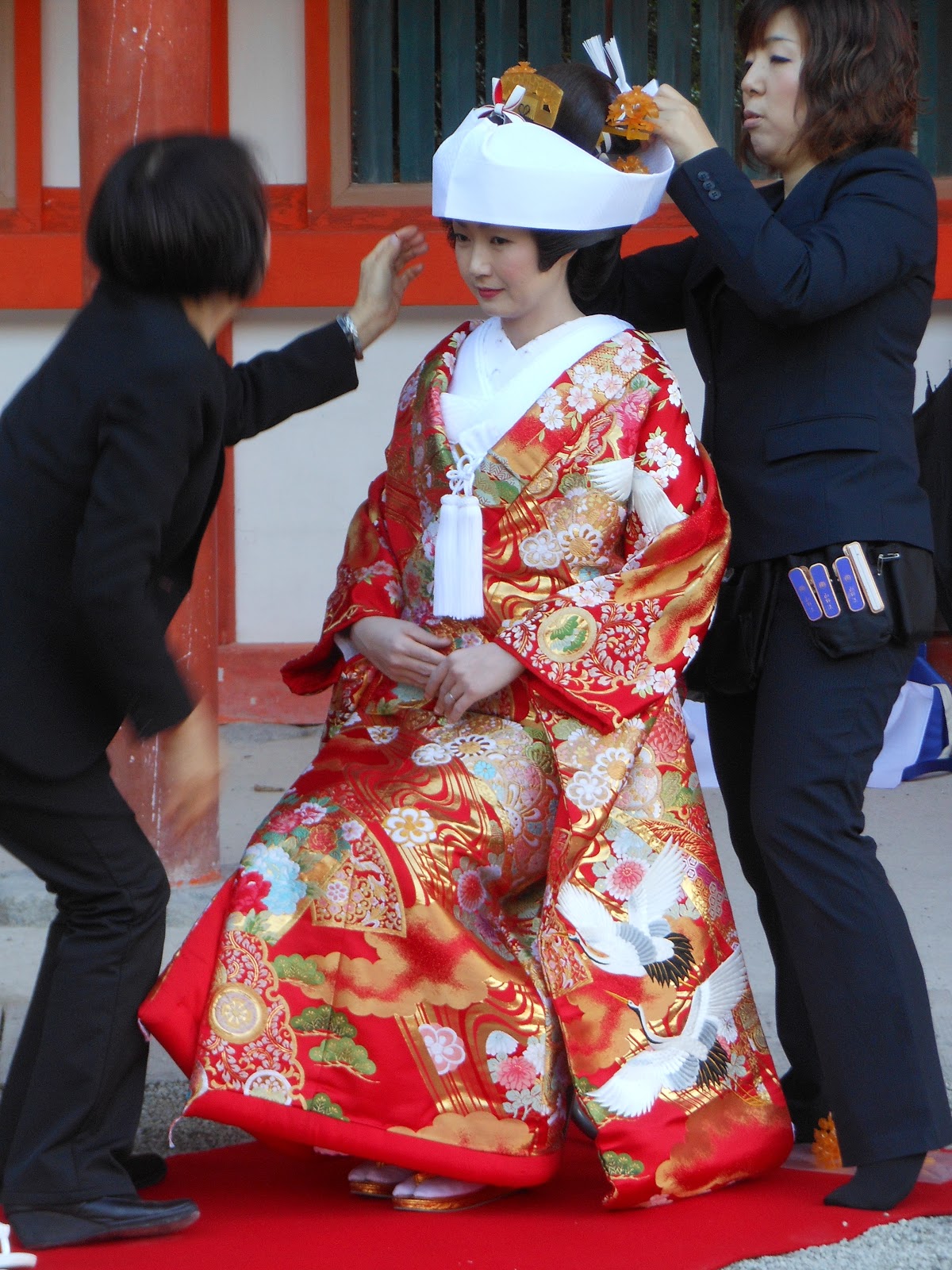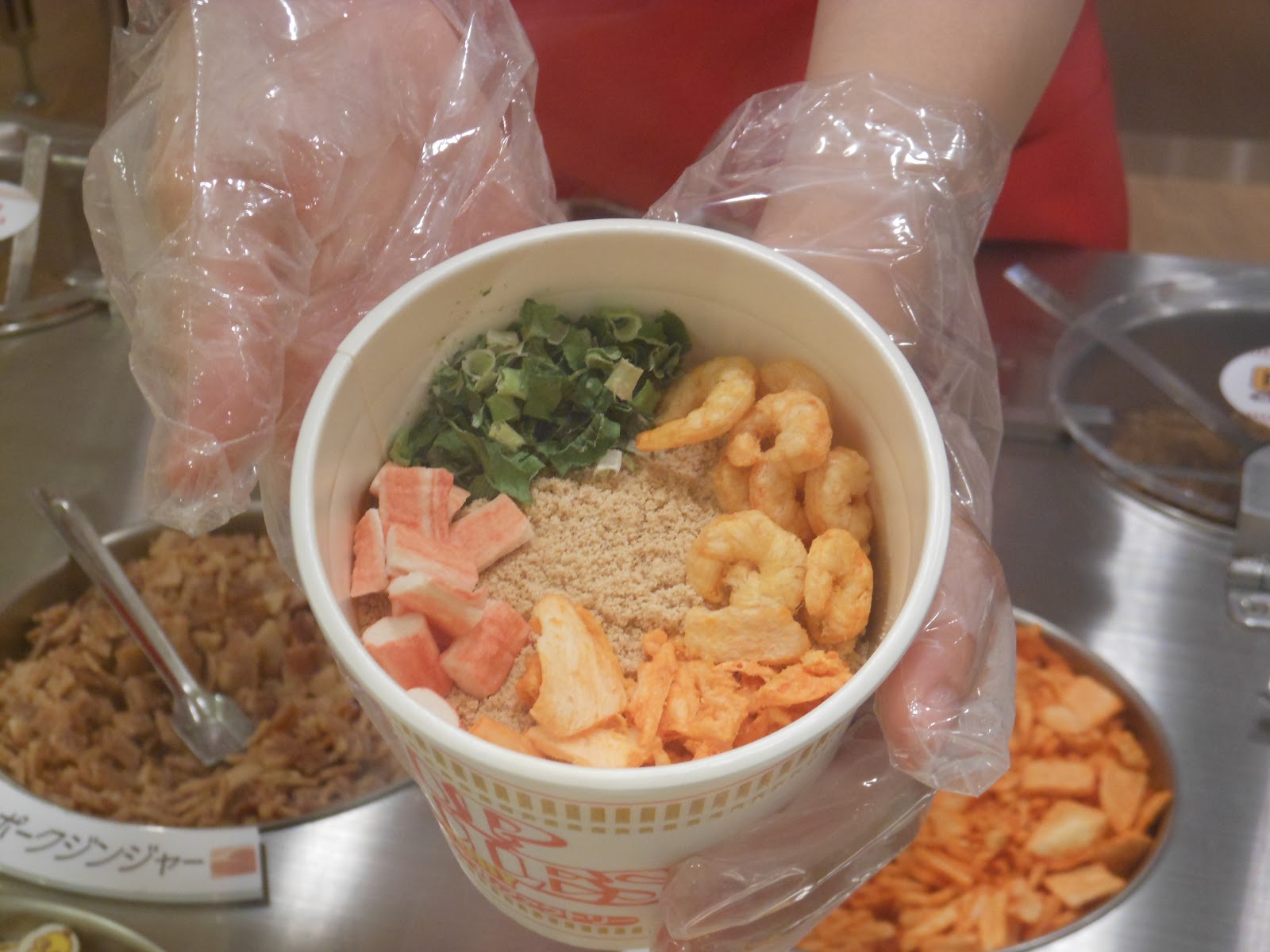Since I’m staying in Kyoto for several weeks, I decided to
take some lessons in some of the “applied” Japanese arts: ikebana (flower arranging), cooking,
and shodo (calligraphy). I figured
these are all things I could continue to do at home and it would be a good way
to learn more about Japan from another perspective.
 |
| Ikebana exhibition |
 |
| Ikebana at Arashiyama park |
Ikebana. In
virtually every temple, hotel or restaurant, you’ll see a beautiful
flower arrangement. You even find
them in unlikely places, like at a park
celebration. I wanted to learn how
to arrange flowers so I could do something more than just plop them in a
vase. So with the help of Ann
Lina, an Indonesian who works in the Kyoto ryokan where I've stayed, I
joined her and the daughter-in-law of our wonderful sensei (teacher), to take
ikebana lessons.
 |
| Ikebana sensei |
 |
| Miwa's ikebana arrangement |
Not surprisingly, ikebana – the art of Japanese flower
arranging – has many different styles and schools, but all start with a few
blossoms, a vase, and a “kenzan” or frog.
Our sensei focused us on the basic principle of “ten-jin-chi” or
“heaven, person, earth”. Basically
we each started with three flowers or branches and placed them at different
heights and angles to make a pleasing arrangement: the tallest representing heaven, next highest the person, and
the shortest symbolizing the earth.
Then we would add another set of three flowers and a pair or two of
others or leaves to make a complete arrangement. Sensei would help us see new possibilities and create a
better balance.
 |
| My "Christmas Ikebana" |
The sessions were much fun, particularly for me since I love
working with my hands. We each
made very different arrangements, all lovely in their own ways. Arranging flowers is a study in
composition, and my sensei commented that she could see the influence of my
years of designing quilts. The
last arrangement we did was with “Christmas colors”, which I still have in my
apartment. My last class will be
next week, on Christmas Day, when we’ll learn to make the traditional arrangement
for New Year’s, pine boughs and a special “tie” of thin gold and silver
covered wire.
 |
| Our ikebana group at an Indonesian dinner | | |
 |
| Fresh yuba |
Our little group was most welcoming to me, and we went out
twice for meals. Ann Lina took us to an Indonesian restaurant so we could
experience the cuisine of her native country. The restaurant was small, but produced a number of
wonderful, tasty dishes that we all enjoyed. Last week we went to Ume no Hana, a restaurant that featured
an all tofu lunch where you could make your own yuba at the table. Yuba is the equivalent of the skin on
scalded milk, only it’s from hot soy milk, and is one of my favorite Japanese
foods. We each got to “skim” the soy milk
many times, and then had grilled tofu, deep fried tofu, yudofu (fresh tofu
simmered in soymilk), and tofu ice for dessert. It was all scrumptious – even those of you who might look
askance at tofu would have enjoyed it (though perhaps not an entire tofu meal).
Cooking. I also wanted
learn how to cook some basic Japanese dishes, not only to replicate them at
home, but so I could cook them here in my little apartment. So I enrolled in a half-day Haru
Cooking Class (www.vegetarian-food-kyoto.com). Despite the name, Haru also offers
classes that include chicken or a tour to the Nishiki Market, Kyoto’s famous
food market.
 |
| Makng a Japanese omelet |
 |
| Light, medium & dark miso |
There were four of us – a couple from Europe and a woman
from Scotland who had just arrived for a huge climate change conference. Haru offers the class in his home, with
his wife helping with the preparations. We
learned the basic ingredients that every Japanese kitchen must have (in
addition to rice, of course) – miso, soy sauce, mirin, rice vinegar, sesame oil, and
canola oil – and how to make dashi (the kelp-based broth used in miso soup and
many other things), stir-fried vegetables, fried tofu, and “chicken burgers”,
each with a delicious sauce. We
also learned how to make an egg omelet, a light dish made with a rectangular
“tomago” (egg) pan. The best part,
of course, was eating what we’d made. The great thing about it
was that all the dishes were practical, tasted good, and could be used with
other foods. So now I have a basic
repertoire for here and home, where there’s at least one Japanese grocery store
near the UN.

I’ve learned that there’s very little processed food
here. Instead, food is prepared
fresh, whether at home or in the local convenience stores. While the diet is different from ours
and other countries – rich in fish and seaweed, rice, soy and sweet potatoes,
seeds and nuts, with some vegetables, a little fruit, and very little fat – it
is “complete” and quite healthy.
Often the taste is more nuanced that what we’re used to, but once
attuned to it, the subtlety is wonderful. Japan is learning western ways, though, and indulges in McDonald’s, pizza,
and bread, so its people, too are starting to gain weight.
Shodo, Japanese Calligraphy. Taking shodo is about developing a practice in
calligraphy. It’s something that
you can do for years, getting better and better, but still have more to
learn. I think that’s the way
Japanese approach any effort they undertake, whether it’s archery, ceramics,
baseball, or perhaps even their jobs.
 |
| Shodo equipment: ready to draw |
Shodo is a deceptively simple art form. It’s not just about the characters, but
also how you hold the brush, place and move it, and how quickly you
make a stroke. How you
sit, how you breathe, and even your mood matters. It’s also about composition: fat and thin lines, the balance among the black strokes
and on the white page. Most
important, it is about being “in the moment”, totally focused on the
conversation – what I think of as the dance – you’re having with the brush as
you move across the paper.
 |
| Corrections |
 |
| My shodo sensei |
My sensei was a woman in her late 50’s who said she’s been
doing calligraphy since she was a child.
She was kind, supportive, helpful and also fun. We managed to communicate well as she
drew a two-character word for me to copy, and then watched carefully as I drew. She
tried to find ways to show me how to turn the brush correctly to get the
desired stroke. I found myself
laughing at some of my “American traits”: drawing forcefully from the heel
rather than the tip of the brush and making fast strokes. “Yukuri, yurkuri!” – slowly, slowly! –
she would admonish me. When I
recall my kanji lessons in Tokyo where I would draw a page full of characters
in a minute or two, I cringe.
My last lesson was today and I made a “final piece”: the characters for “eternity” on hardboard. I must say I was surprised at how well it turned out: what had been hard initially, I could
now do reasonably well. It was
great fun, and also quite moving:
a lesson not just in drawing, but in being as well.





























































